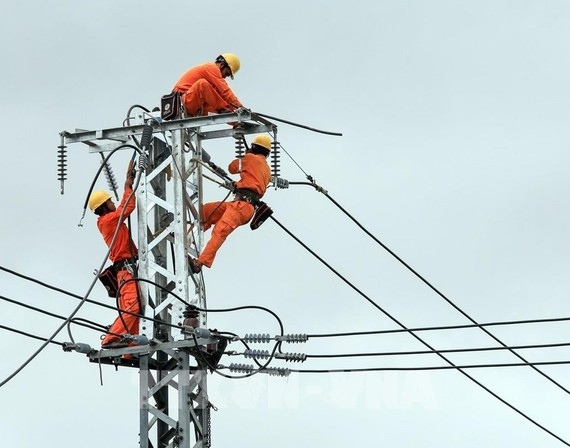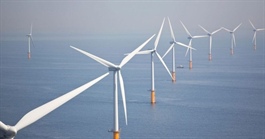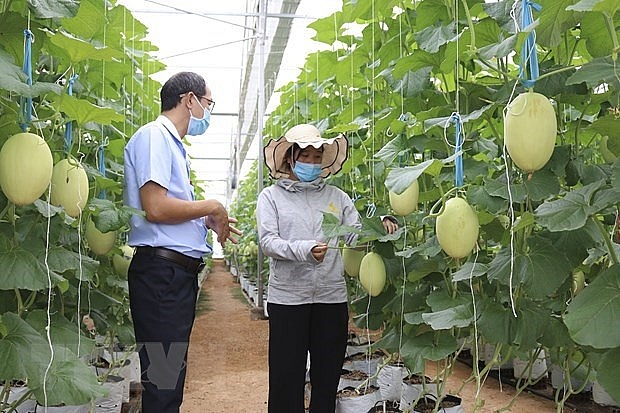Uncertainties delaying Electrical Power Plan
Uncertainties delaying Electrical Power Plan
There needs to be an urgency in the production of electrical energy in Vietnam, with an impending shortage of water at hydropower plants, and solar energy and wind energy not receiving sufficient investments.
Illustrative photo. |
Several uncertainties are delaying the Electrical Power Plan VIII project for the national development plan for the period 2021 to 2030 with a vision until 2045. There are also very many hurdles and hindrances for the development of Liquefied Natural Gas (LNG), which has been expected to bring about an energy revolution.
Several hurdles
LNG generated electrical power was suggested for national development in Resolution 55 by the Politburo in 2020, but it was not until Prime Minister Phạm Minh Chính made a commitment at the COP26 conference in Scotland in 2021 for bringing waste emissions down to zero by 2050 that development of this kind of energy was discussed. The draft of the Electrical Power Plan VIII project sets a goal to stop producing 18 GW of electricity at coal-fired power plants and begin to generate 14 GW of electrical power from LNG and 12 to 15 GW from renewable energy.
This is to say that by 2030 Vietnam will produce 23,900 MW of electricity from LNG, which is approximately 16.4% of the electricity produced. In this, 7,900 MW had been mentioned in the revised Electrical Power Plan VII and only about 6,000 MW would be produced by 2030. There will be a focus on this in the North in an effort to ensure electrical power supply for the much-needed area.
As indicated in the Electrical Power Plan VIII, the Ministry of Industry and Trade has estimated that LNG prices would rise by 10%, causing the average cost of electricity production to increase by 1.1% to 1.5%. If LNG prices climb to USD 16.5 per MMBTU, which is a 40% increase, the average cost of electricity production could go up by almost 6%, compared with the costs estimated in the Electrical Power Plan VIII. Analysts say that there are several variables for development of LNG in Vietnam as a result of different hurdles arising from policies, capital resources, and the market, many of which are very hard to surmount.
First of all, the supply and price of LNG depends heavily on imports. The price of this fuel has skyrocketed threefold in the last year, from USD 8.21 per 1 MMBTU in January 2021 to USD 24.71 per 1 MMBTU this year. Worse still, the Russia and Ukraine conflict has caused LNG prices on the global market to rise beyond all predictions. Second, the high prices of imported LNG have hampered the Power Purchase Agreement (PPA) from being signed between the investors and the Vietnam Electricity Group (EVN) because the selling prices are lower than the buying prices.
Therefore, negotiation on the price in PPA has always been the hardest stage before an LNG project can be successful because it is imperative to adhere to all the regulations, based on the annual sold amounts of electricity and the returns on investments and the investment costs. Currently, about 50% of gas-fired electricity plants proposed for research, construction, and implementation of some infrastructure items such as storage tanks, gas pipes and gas import harbors have not been officially started, because PPA related negotiations have not been satisfactorily completed.
For instance, the Bac Lieu gas-fired electricity plant financed by Delta Offshore Energy (DOE) from Singapore, was approved for the Electrical Power Plan VII and a decision on investment was also approved. During the process of negotiation, DOE asked EVN to guarantee consumption of all the electricity produced in this project. DOE also must guarantee payment, such as allowing it to have access to the national foreign currency reserve to pay debts and fuel imports.
Other investors also said that the Law on Investment under the Public Private Partnership (PPP) has abolished the Government's contract implementation guarantee for businesses and the Government's commitment to converting foreign currencies for the projects. This has made it difficult for them to raise the necessary capital by putting the cash flow at risk if any adverse circumstance may occur.
Hydrogen technology
During a recent meeting co-organized by the Ministry of Industry and Trade and the Ministry of Planning and Investment to evaluate investment resources for clean energy, Mr. Dang Hoang An, Deputy Minister of Industry and Trade, said that hydrogen technology is the trump card on which Vietnam pins the most hopes for the Electrical Power Plan VIII. With an output of about 3.3 million tons of hydrogen from 2030 onwards, Mr. Dang Hoang An said that Vietnam can meet 70% of the domestic electricity consumption demand and ensure better energy security, while being able to guarantee carbon reduction commitments made at the COP26 conference.
The necessary technology and the affordable costs play a pivotal role. Currently, this technology has only been studied and made use of by a few developed countries such as Japan, South Korea, and the United States. Mr An said that they are negotiating with their partners and asking them to transfer this technology. According to him it will not be easy, but they will still try their best because only developed countries have enough resources to do research and put this technology to use. Hydrogen technology remains a mystery until now, but when it is actualized, it will be the technology that will be able to revolutionize the electricity industry in the next ten years or so.
The development of renewable energy sources must also contain and prevent problems so as to ensure the stability and safety of the power system. There is need to eradicate the differences between alternating current (AC) and direct current (DC) power sources to satisfy the needs for electricity consumption and energy storage, and provide sufficient electricity, clean fuel, and heat. These knotty problems can be resolved by using hydrogen energy in an attempt to switch from fossil fuel energy to renewable clean energy. This attempt will lead from limited amounts to limitless amounts of renewable energy and from foul energy to cleaner energy. Many experts believe that the price of hydrogen fuel in the future will decrease because of electrolysis technologies, while fuel cell technology will improve, and storage and transportation costs will also become relatively competitive.

























